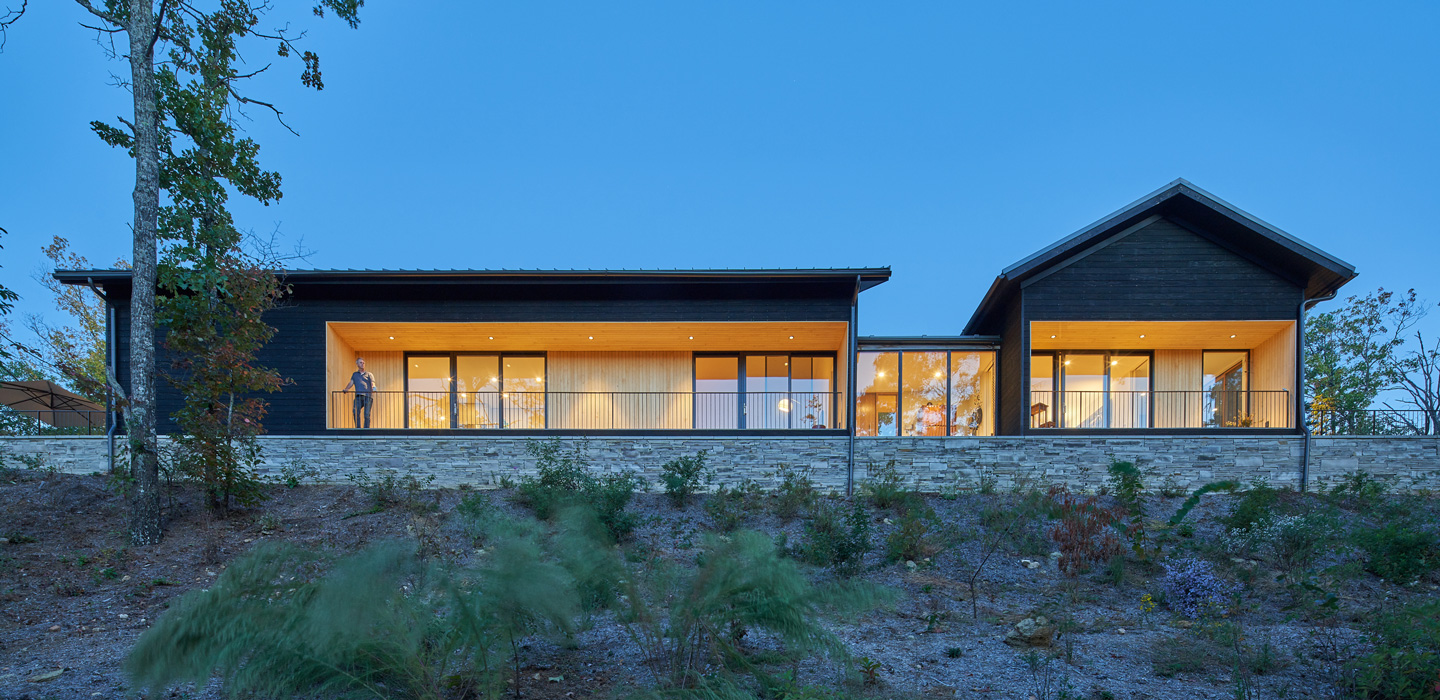
Short Mountain House
This project is located on a ridge in Maryville, Tennessee with panoramic views to the Great Smoky Mountains National Park. Designed for a couple with an extended out of town family, the house is divided into three distinct pavilions. These allow the house to be compartmentalized to efficiently accommodate the needs of the owners while allowing for the ability to expand into the adjacent pavilion during visits by children and grandchildren. The layout of the three pavilions or organized in a way which allows for clear sitelines into the park and while defining a series of unique exterior spaces surrounding the house. The pavilions are joined by entry connectors designed as bridges spanning between the pavilions.
While the simple gable forms recall the vernacular structures of the area, the pitch was selected based on the forms of traditional Japanese architecture. A restrained material palette of stone veneer, wood siding, and standing seam metal roofing is utilized to help the house blend in with its surroundings. Two wood sidings are used on the house. The primary siding is Accoya with a brushed shou sugi ban finish. This traditional Japanese treatment process is used to preserve the wood by charring it. The heavily-charred surface of the board makes the wood fire retardant as well as resistant to rot, insects and decay. A secondary siding material is used in inset “engawa” spaces. A defining feature of the traditional Japanese house, the engawa is a covered strip of decking, often finished in wood, which runs along the periphery of the house acting as a transition between the house and the garden. Each of the pavilions incorporates individual engawa spaces at the transition from interior to exterior spaces. These covered porches also help control solar heat gain by providing overhangs at the large sliding glass doors featured at the engawas.
Sustainable Features:
• The layout of the pavilions along the ridge was carefully studied to maintain existing large trees, maximize north/south exposure, and limit site work required for construction. The narrow floor plans of the pavilions minimized site disturbance on the north and south slopes.
• The majority of the exterior glazing is protected by the overhangs of the engawa spaces to minimize heat gain during the summer months.
• Continuous exterior insulation is provided on the exterior walls of the house.
• The unvented crawlspace allows for ductwork and other systems to be installed within the thermal envelope.
• A rainwater harvesting system serves as the potable water supply for the project. The roof downspouts are routed to (3) 1700 gallon storage tanks located in the crawlspace. A water filtration system consisting of a 5-micron sediment filter, a carbon filter, and an ultra-violet disinfection system treat the water prior to entering the home.
• An electric vehicle charging station is provided in the garage.
• Native plant species selection which minimizes irrigation and maintenance needs, including planting for the extensive green roofs on the spaces which connect the pavilions.
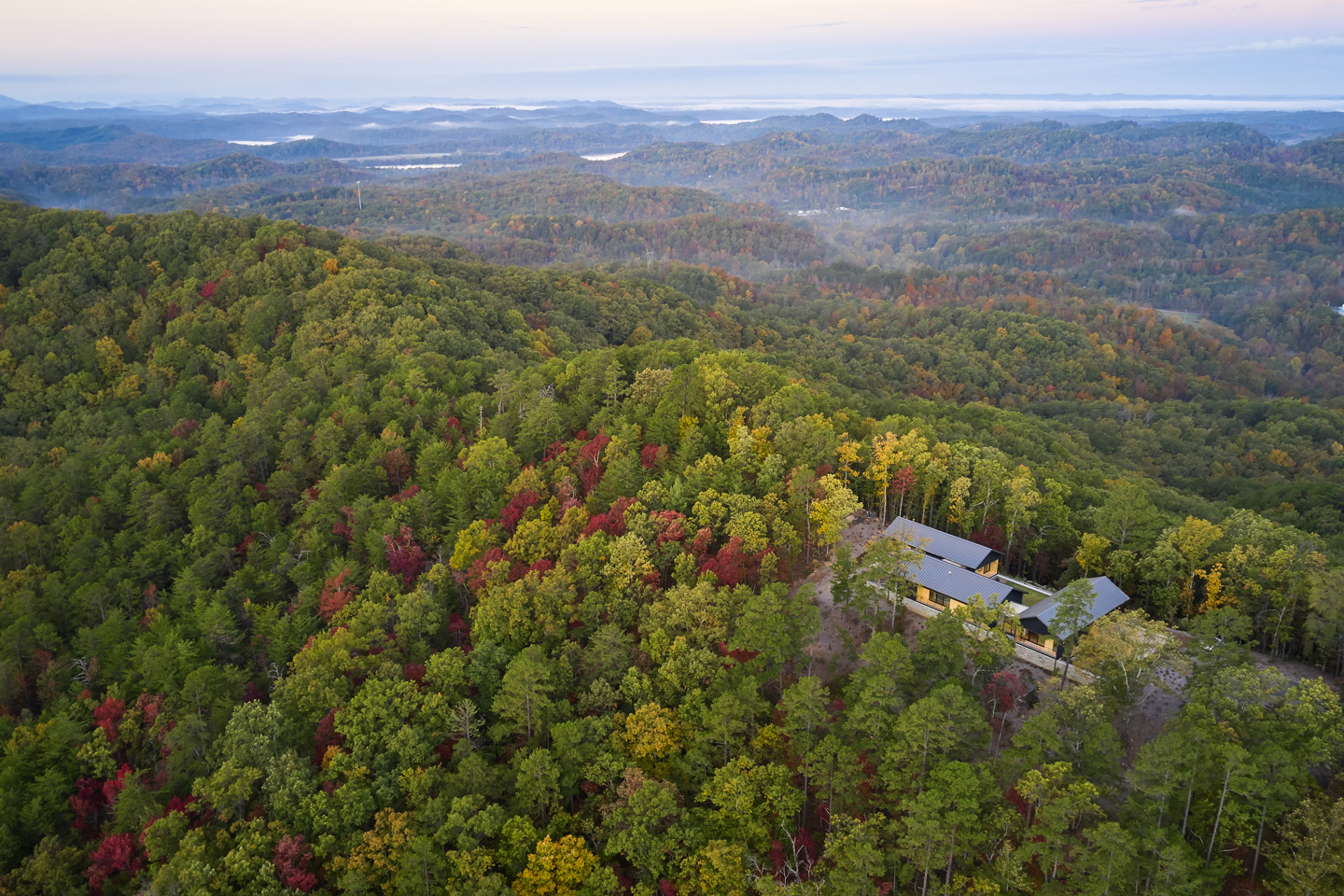
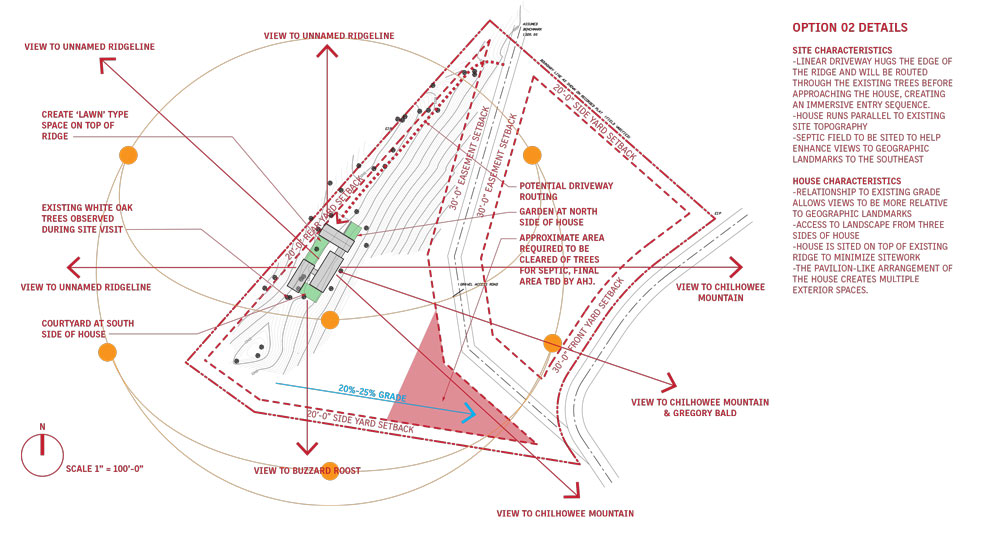
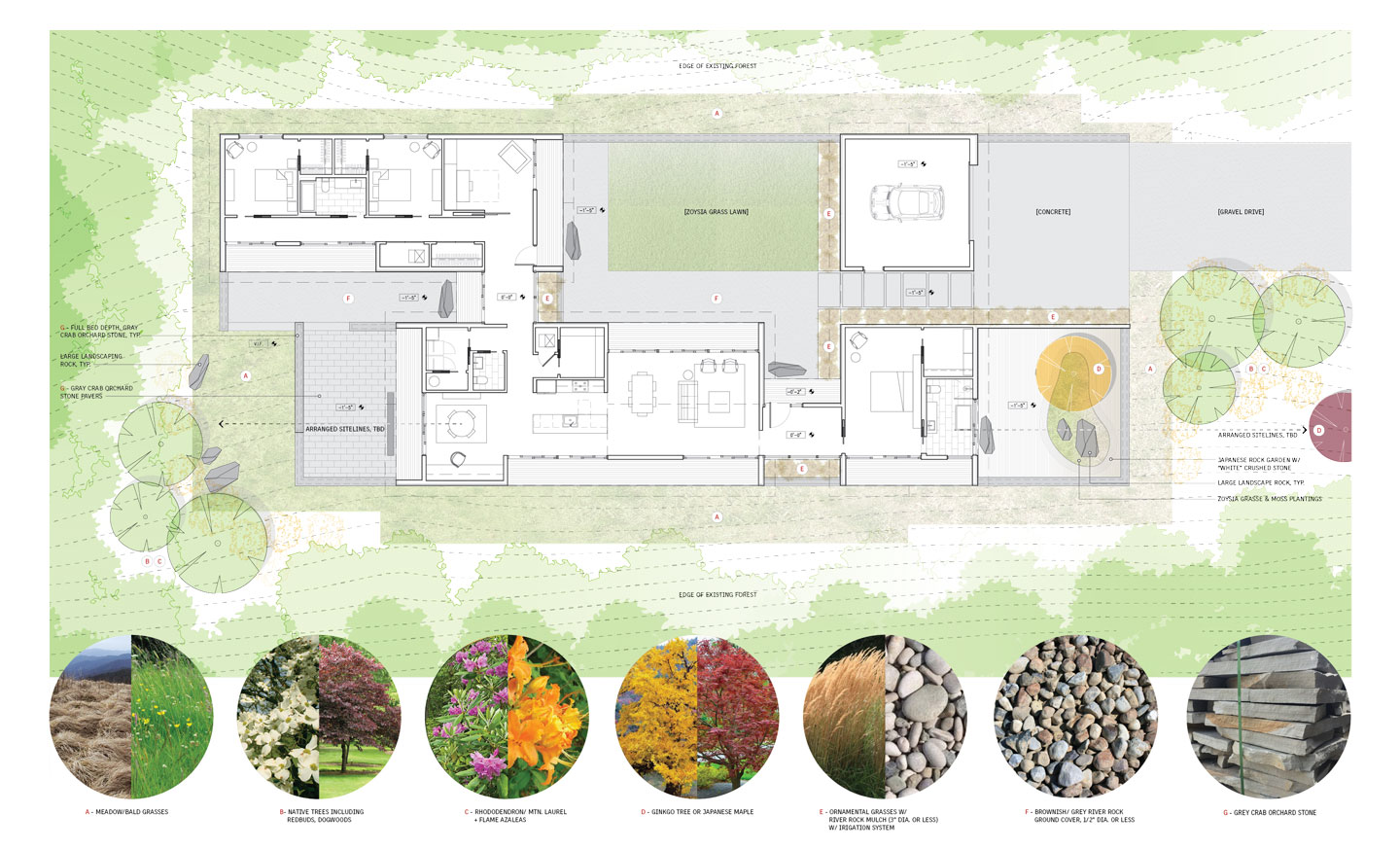
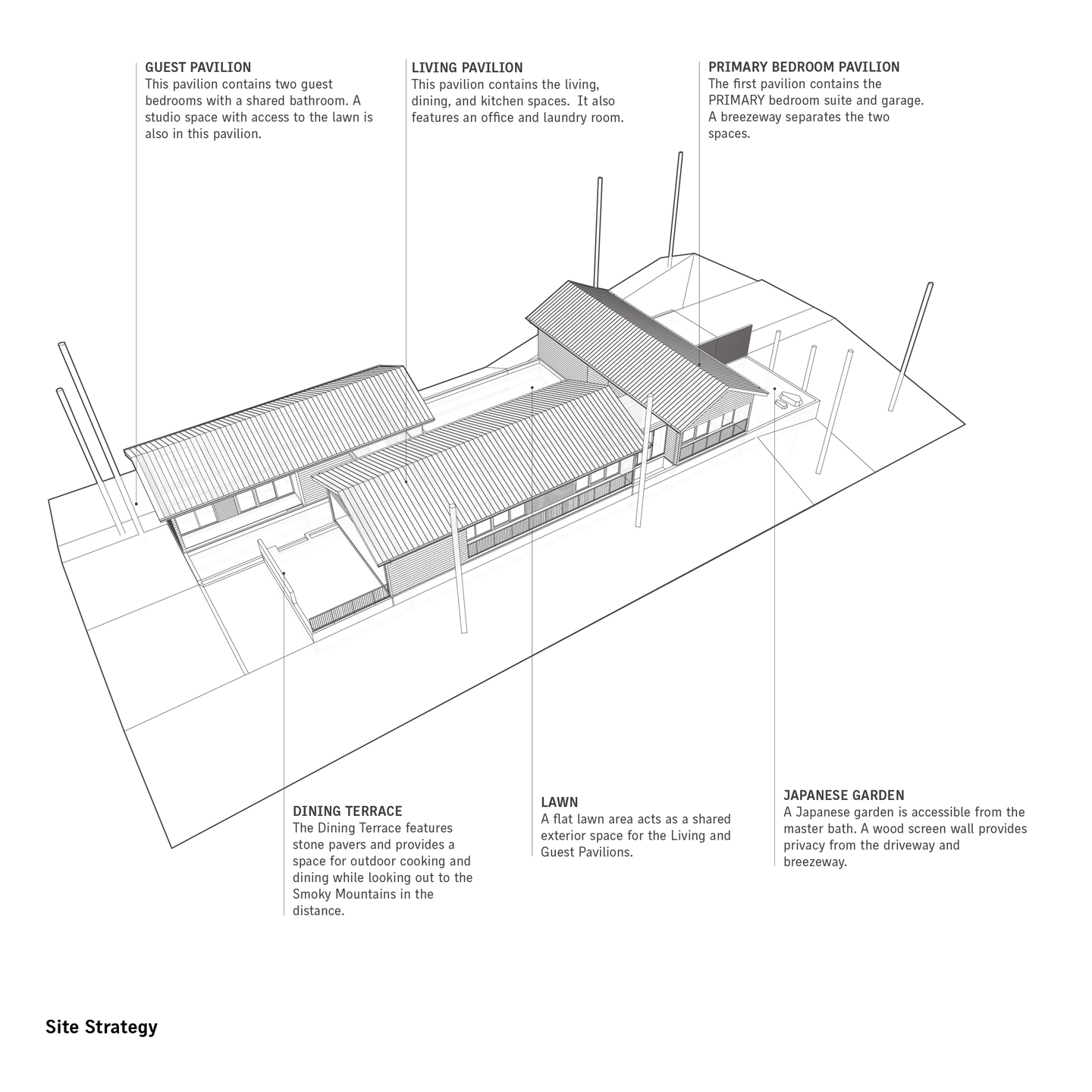
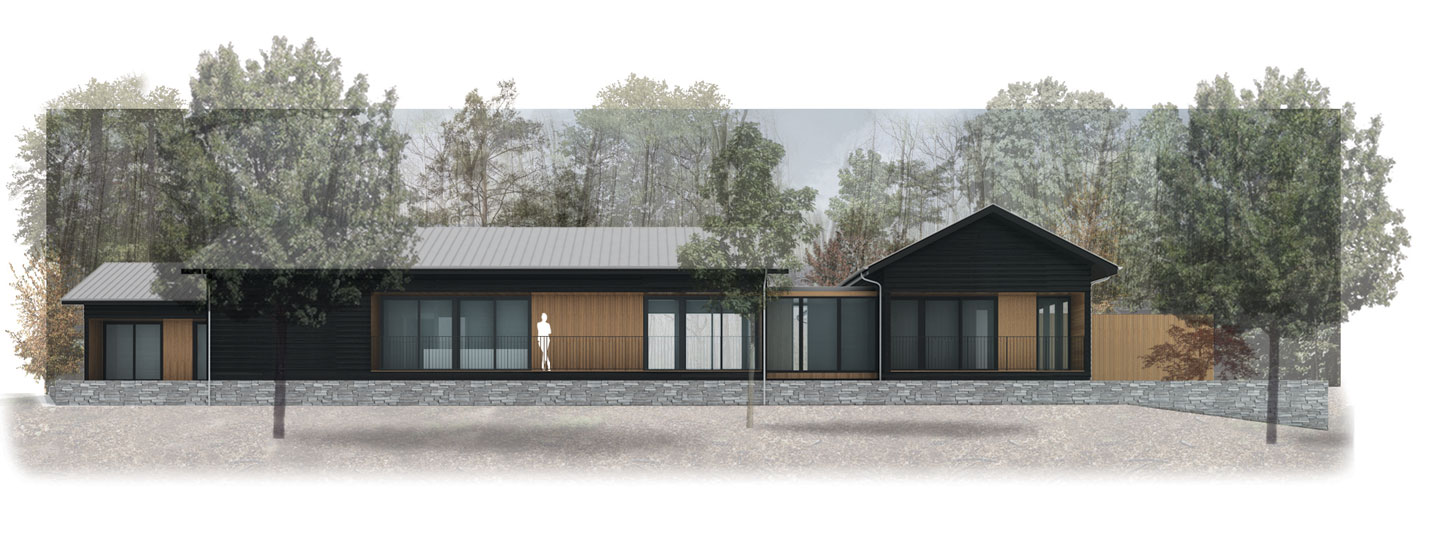
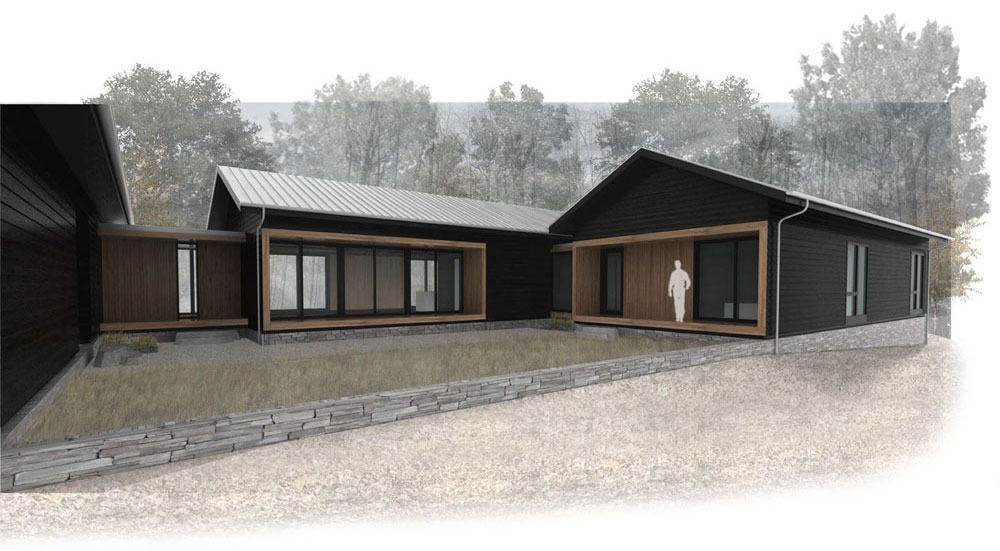
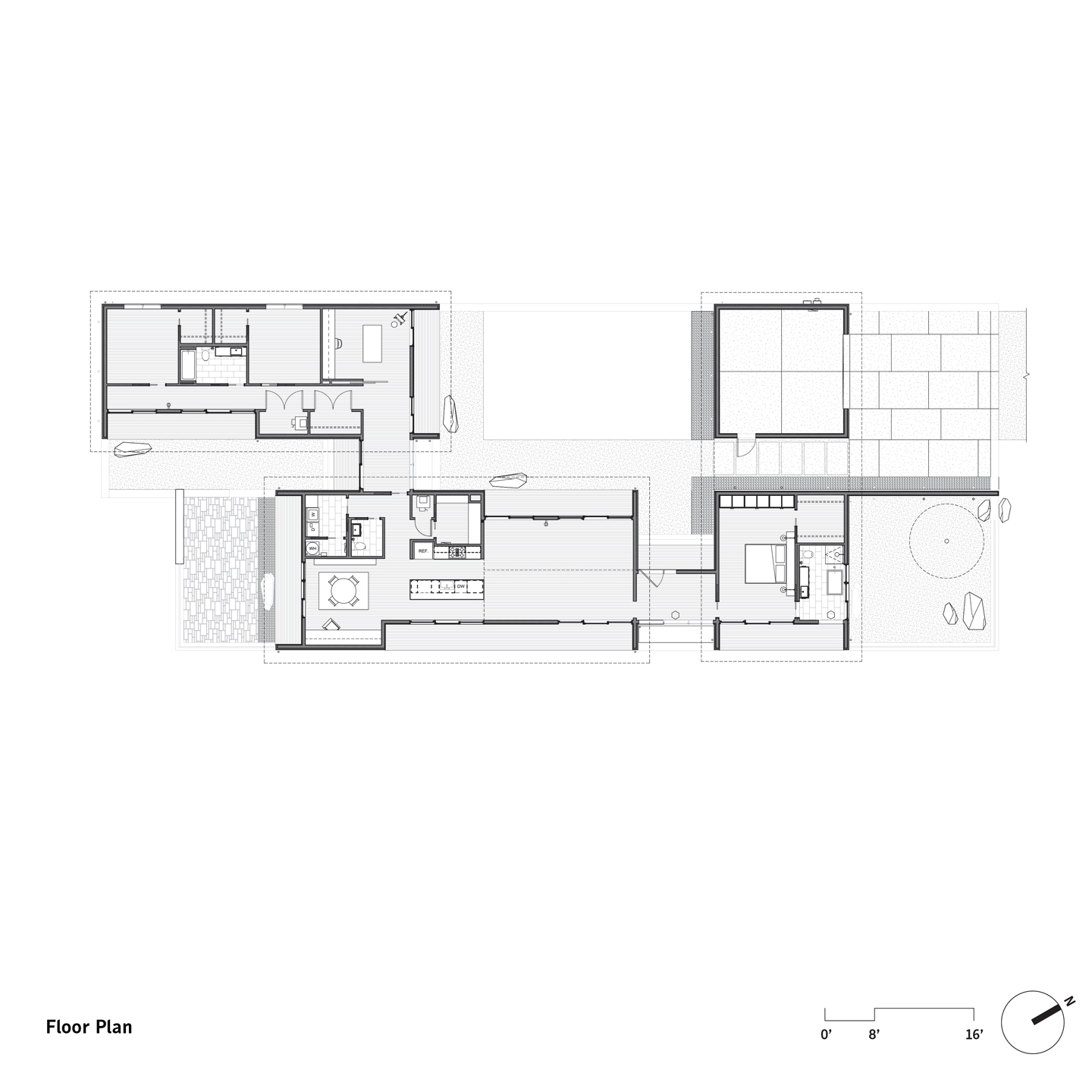
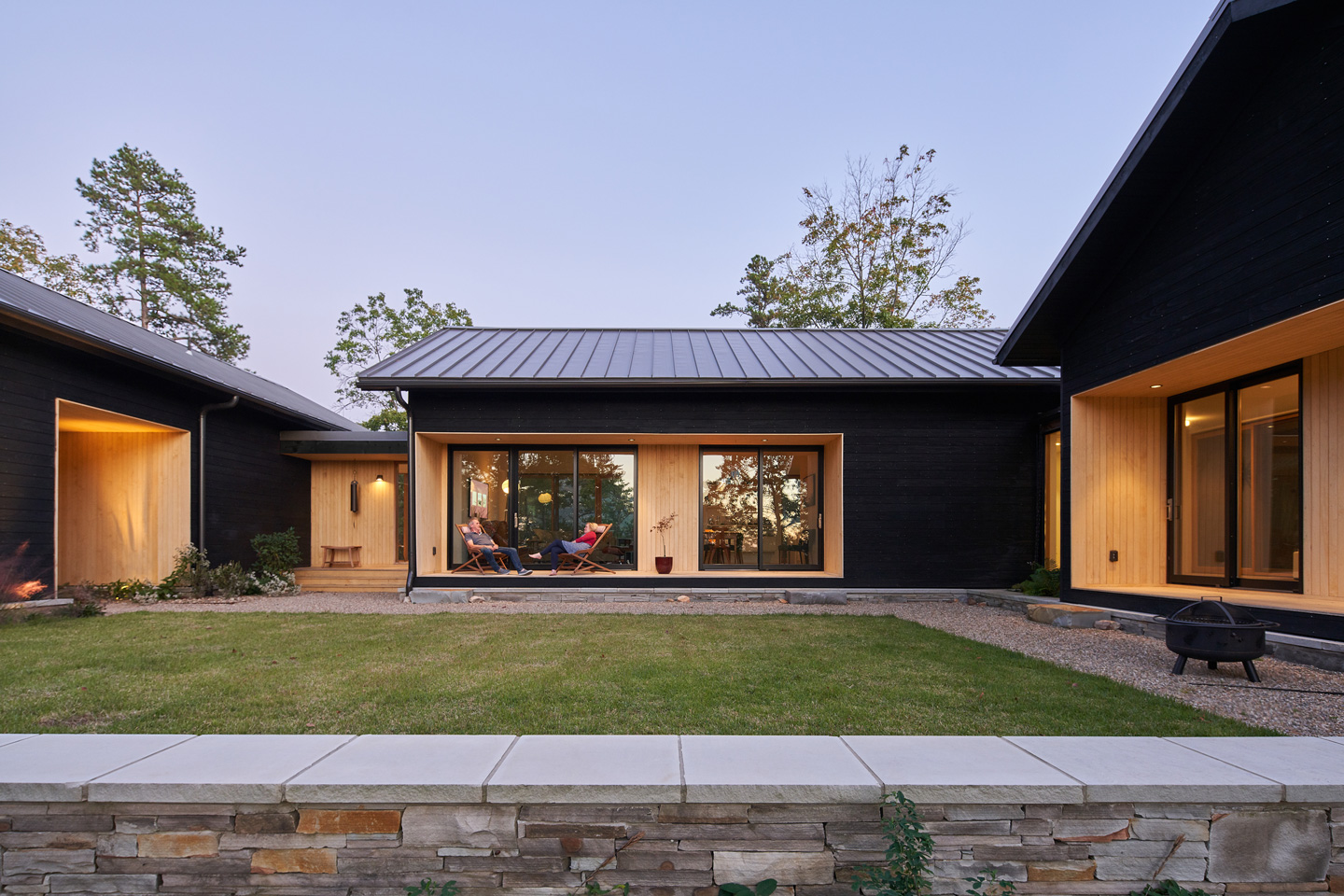
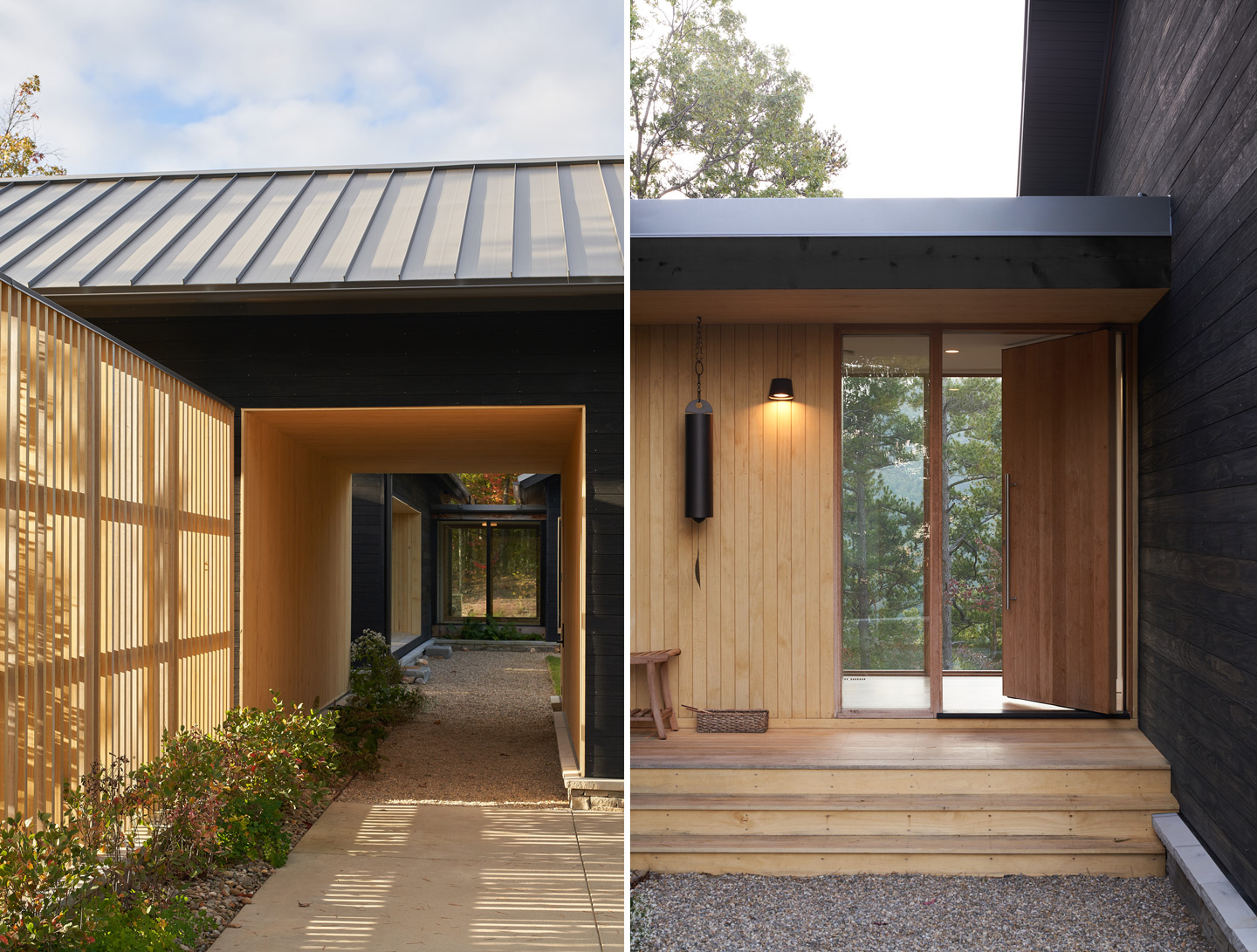
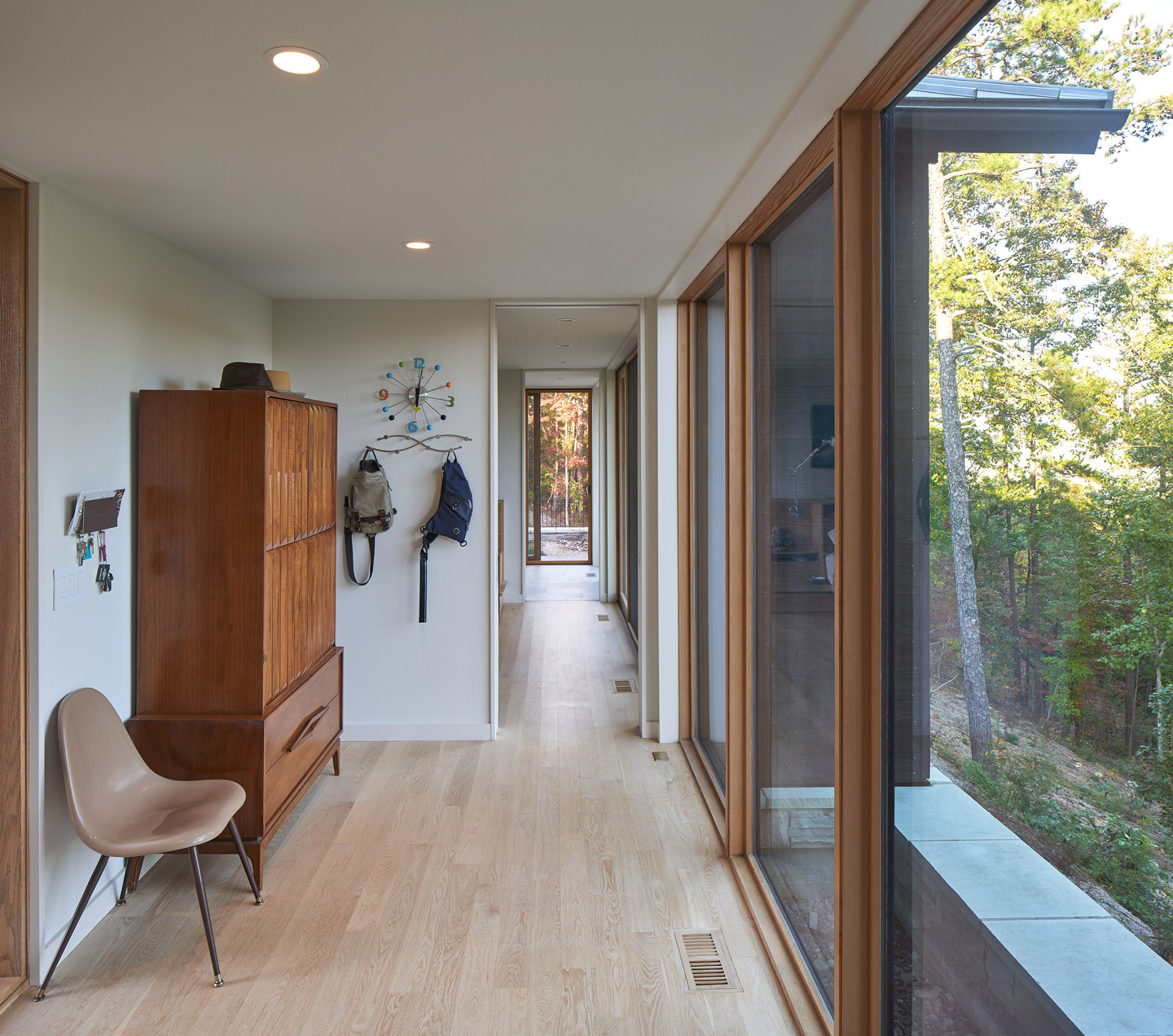
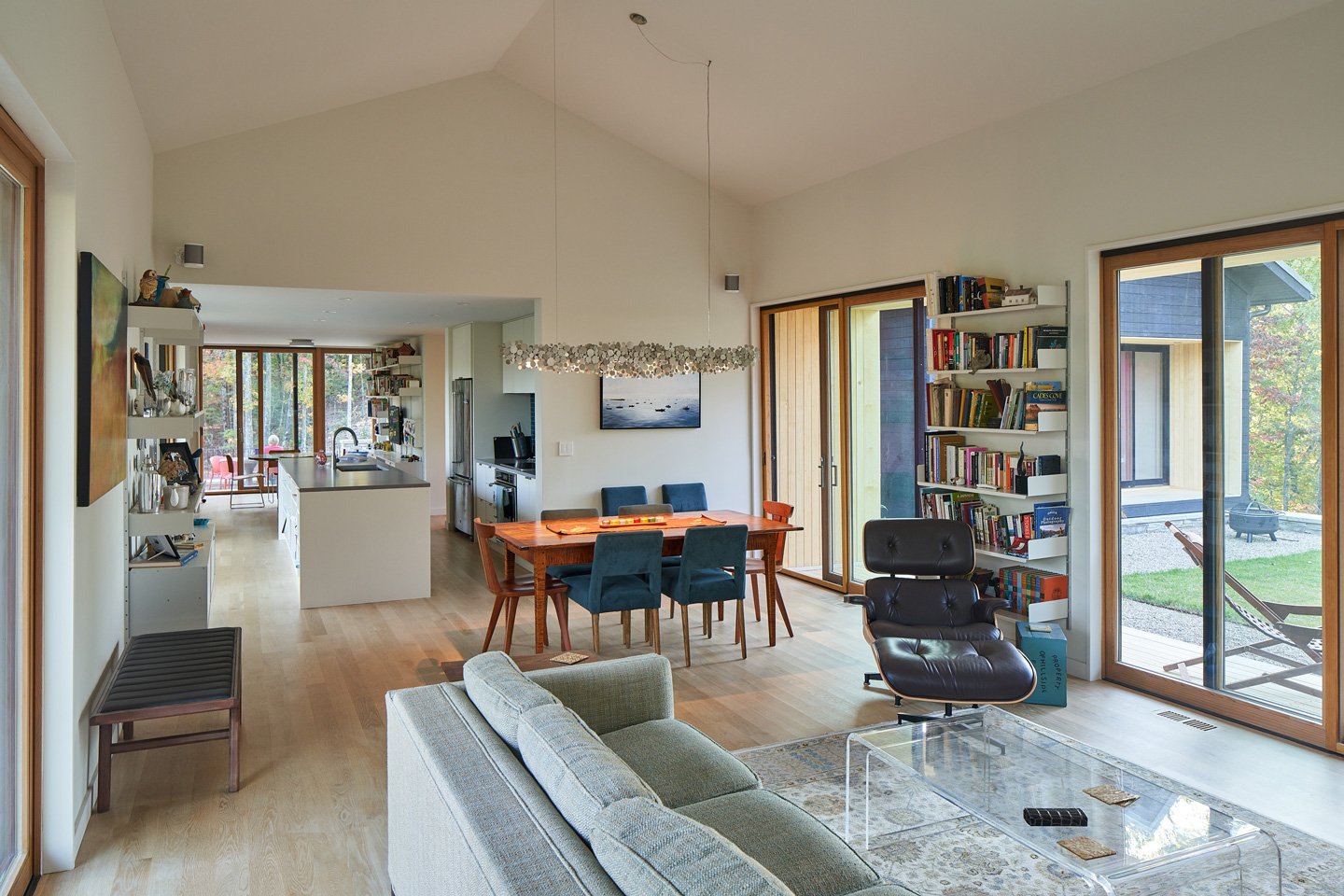
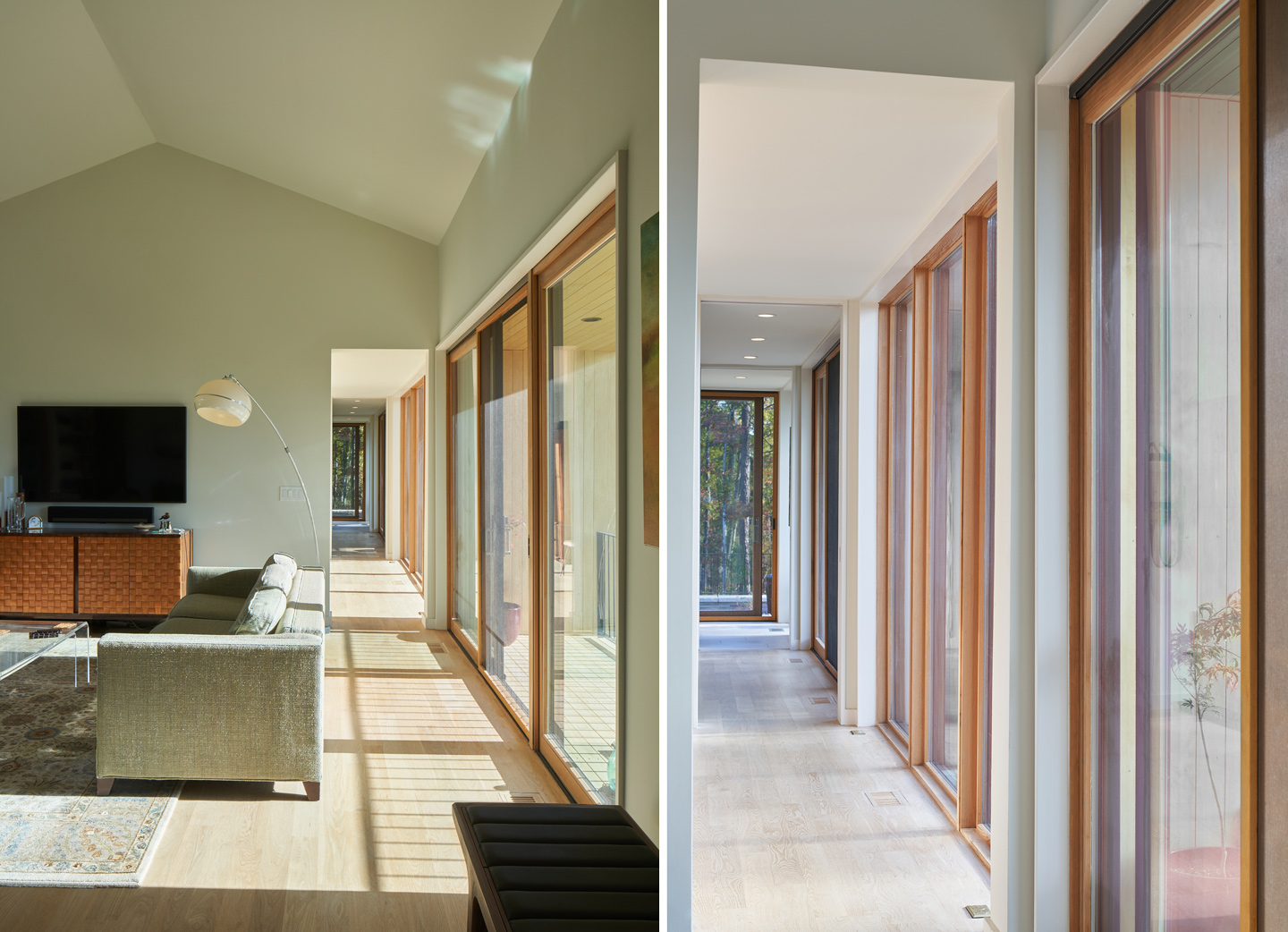
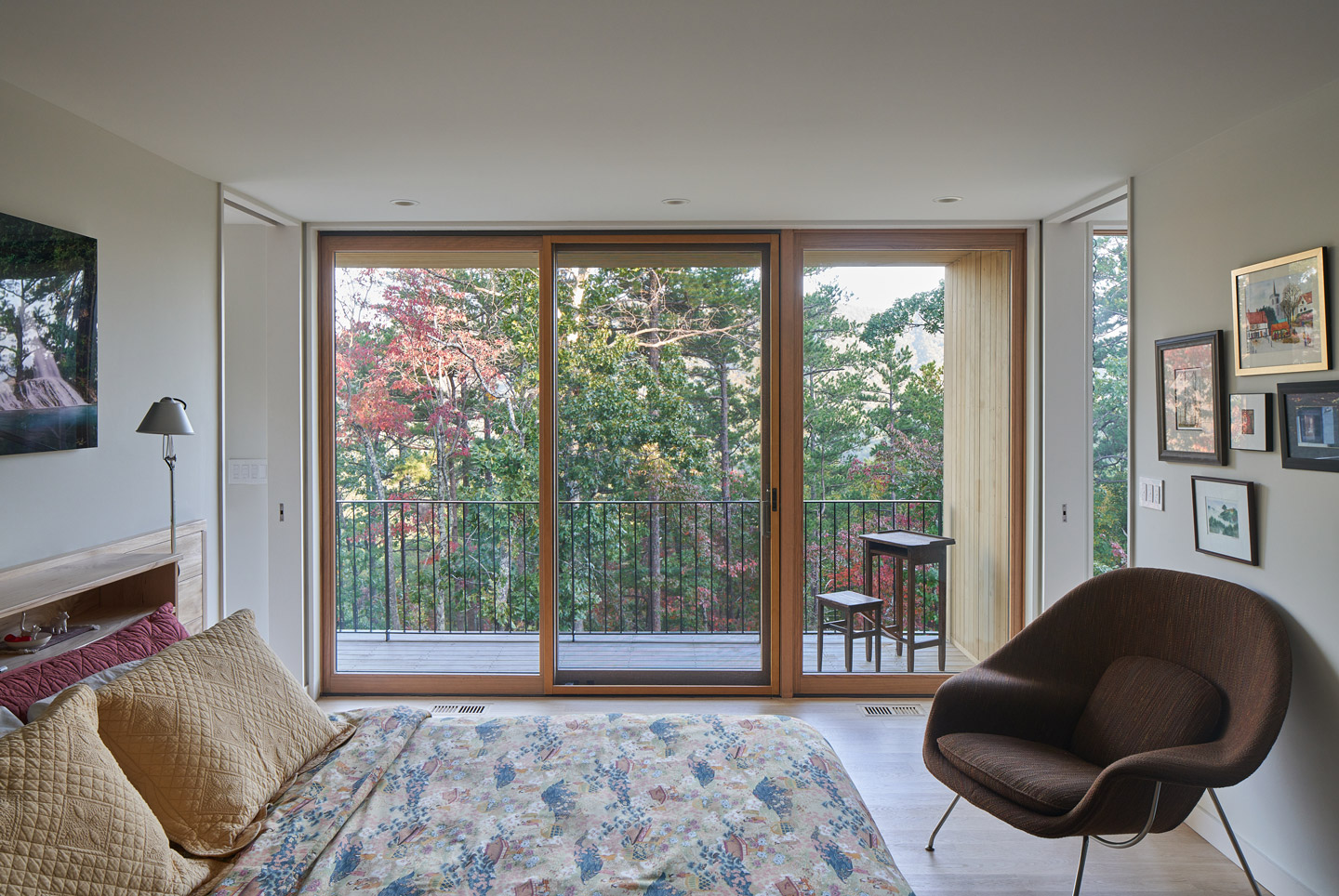
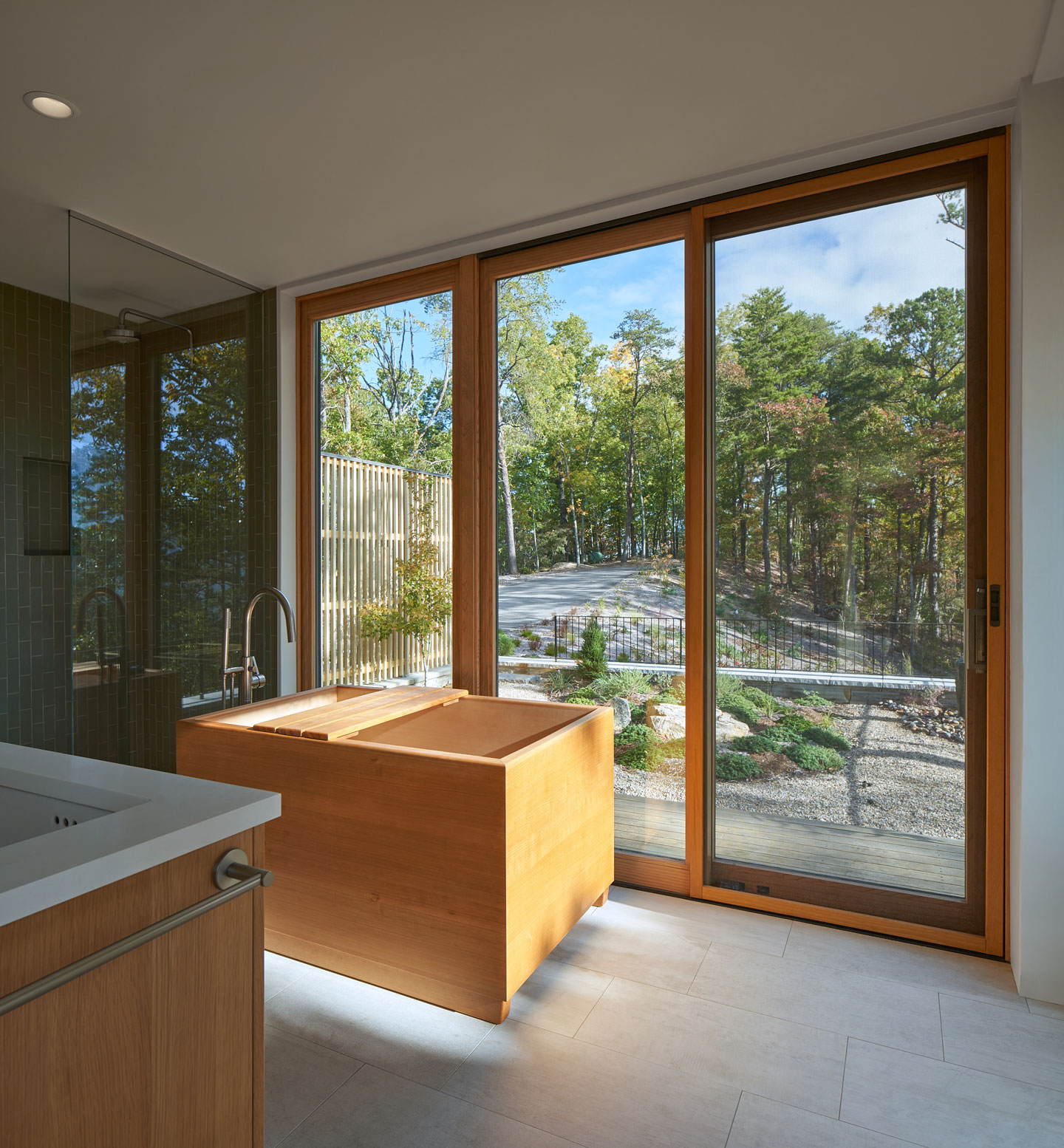
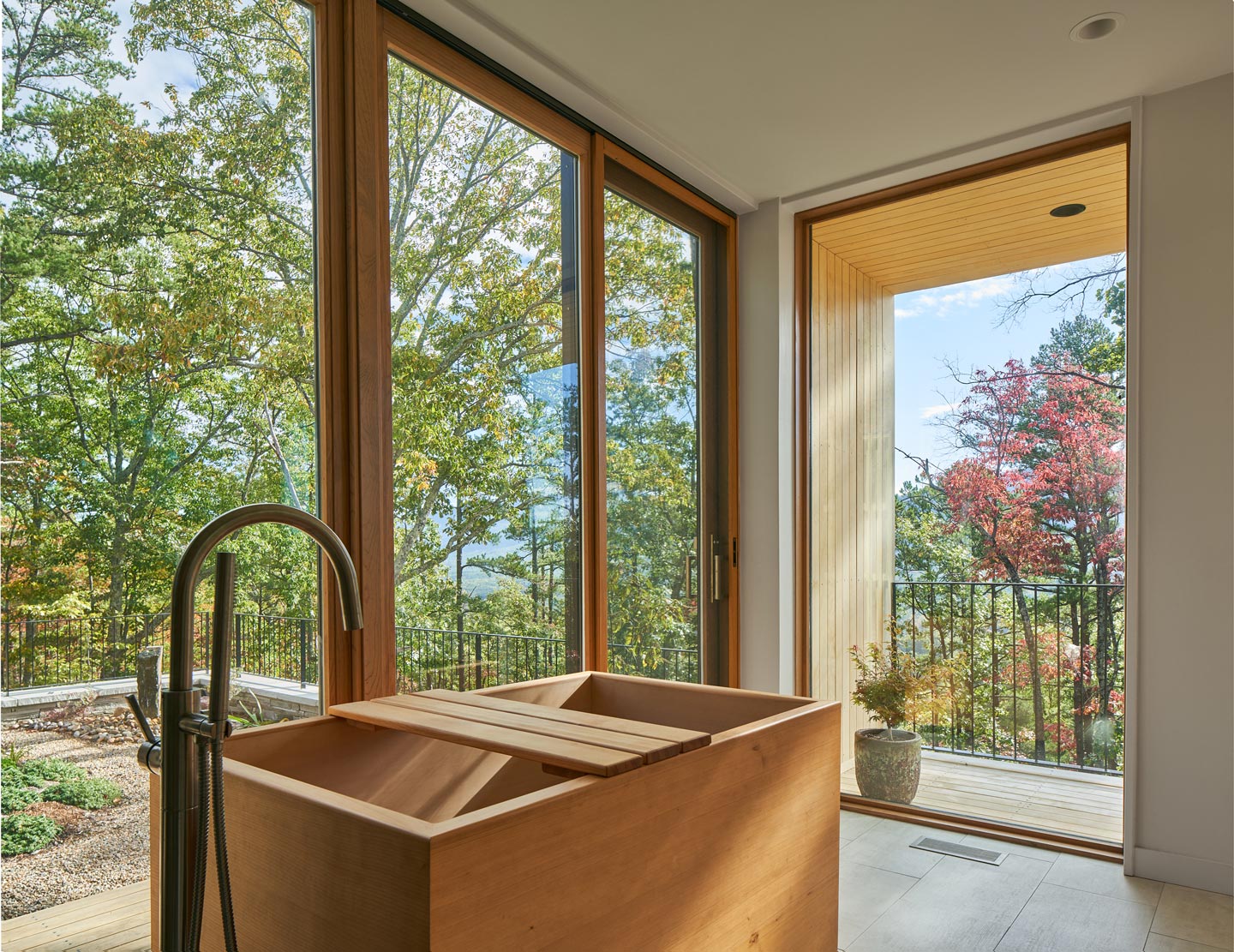
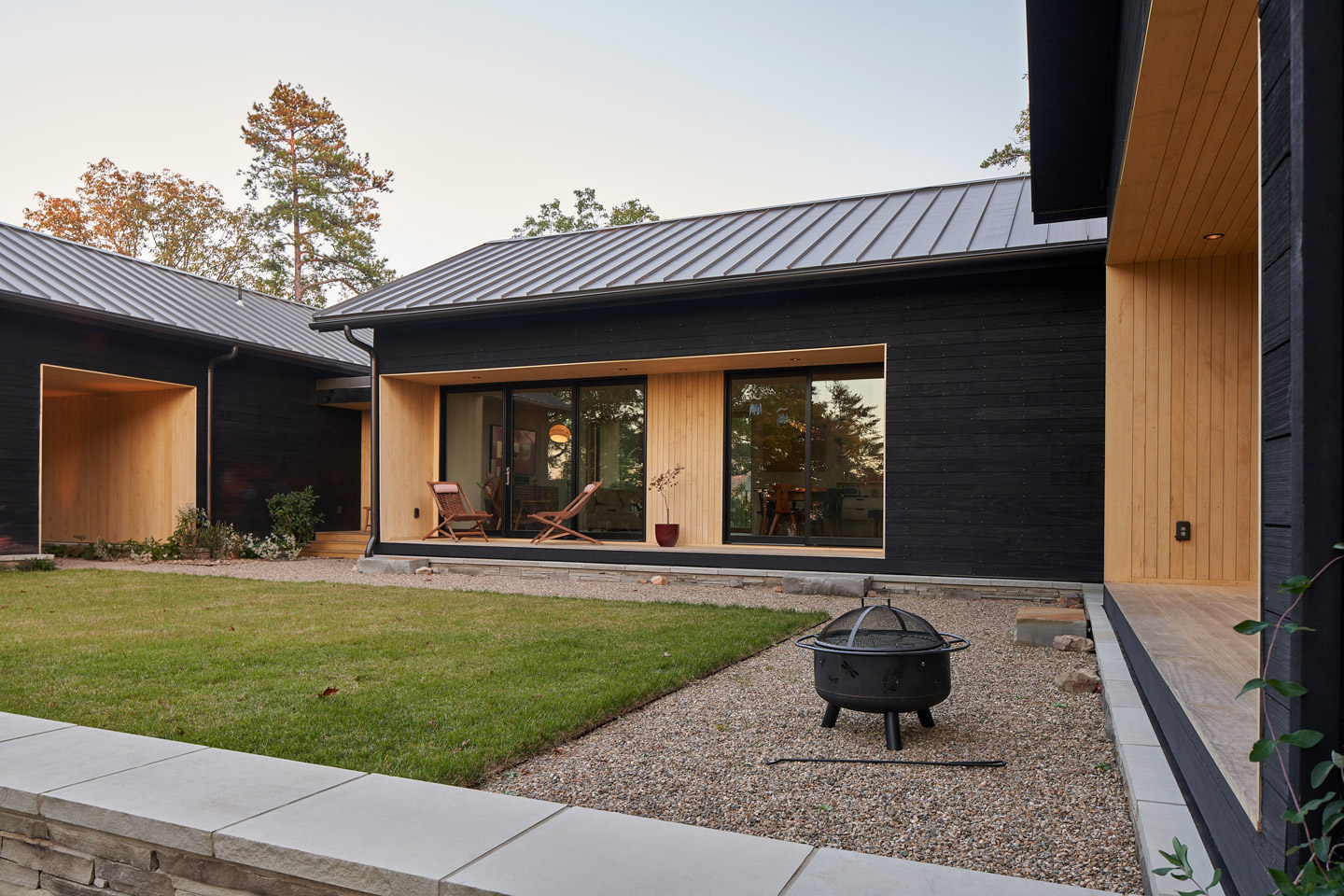
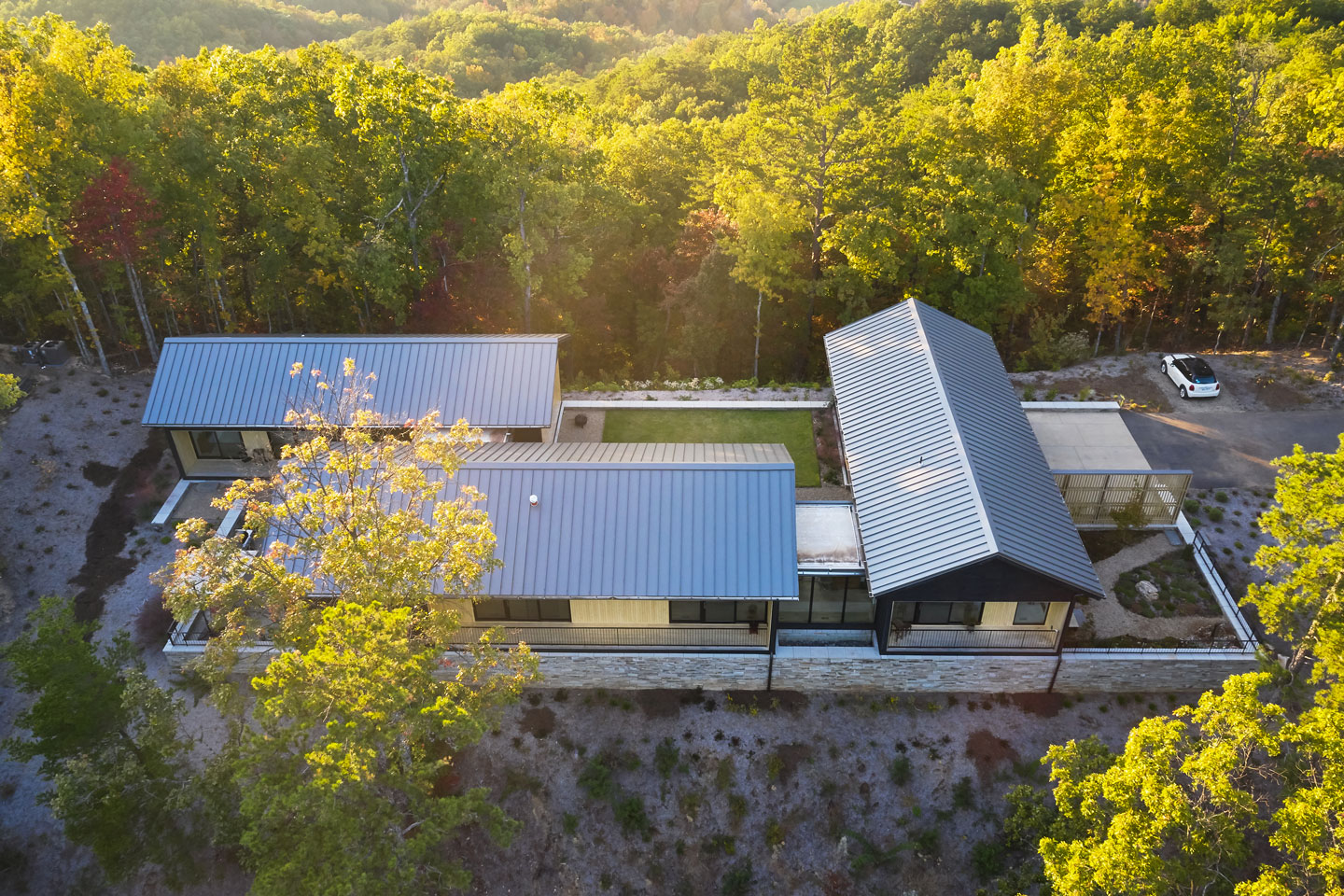
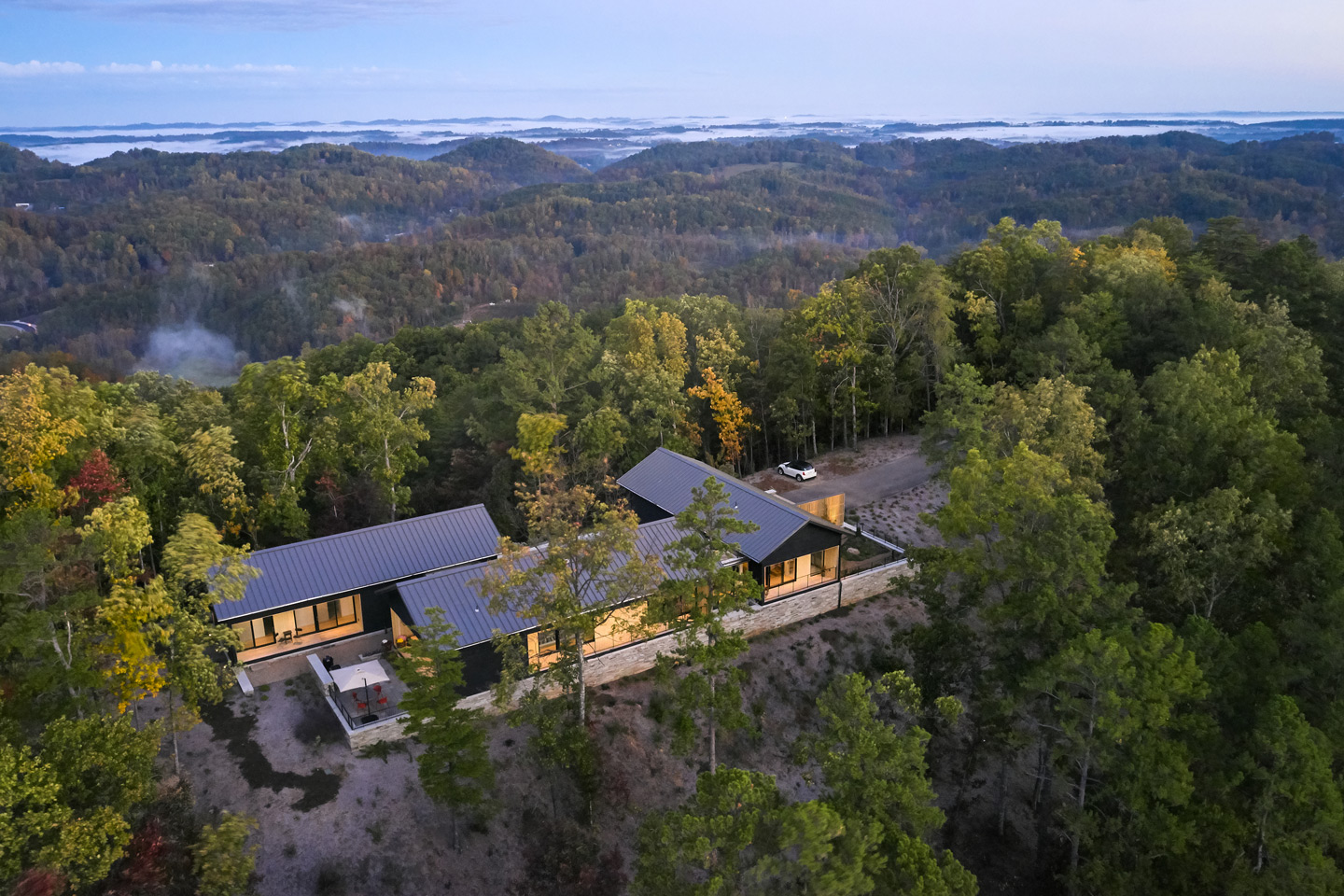
Client:
Dr. Martha S. Head
Size:
3,200 SFCompletion Date:
2020Project Team:
Brandon F. Pace, FAIA LEED AP (Principal in Charge)
John L. Sanders, FAIA
Michael A. Davis, AIA LEED AP
Cameron S. Bolin, AIA
Photo Credits:
Keith Isaacs Photo
Sanders Pace Architecture
Recognition:
“Short Mountain House has views over Tennessee national park”, Dezeen, March 8, 2021
“Short Mountain House – Sanders Pace Architecture”, ArchDaily, January 21, 2021